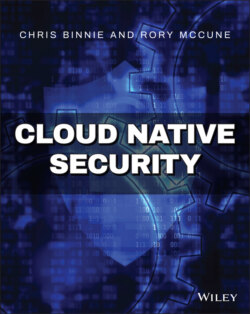Читать книгу Cloud Native Security - Chris Binnie - Страница 8
Introduction
ОглавлениеThere is little doubt that we have witnessed a dramatic and notable change in the way that software applications are developed and deployed in recent years.
Take a moment to consider what has happened within the last decade alone. Start with the mind-blowing levels of adoption of containers, courtesy of Docker's clever packaging of Linux container technologies. Think of the pivotal maturation of cloud platforms with their ever-evolving service offerings. Remember the now-pervasive use of container orchestrators to herd multiple catlike containers. And do not forget that software applications have been teased apart and broken down into portable, microservice-sized chunks.
Combined, these significant innovations have empowered developers by offering them a whole new toolbox from which their software can be developed, and a reliable platform that their applications can be deployed upon.
In hand with the other recent milestone innovations in computing, such as the growth of Unix-like operating systems and the birth of the web and the internet as a whole, Cloud Native technologies have already achieved enough to merit a place in the history books. However, as with all newly formed tech, different types of security challenges surface and must be addressed in a timely fashion.
Cloud Native security is a complex, multifaceted topic to understand and even harder to get right. Why is that? The answer lies with the multiple, diverse components that need to be secured. The cloud platform, the underlying host operating system, the container runtime, the container orchestrator, and then the applications themselves each require specialist security attention.
Bear in mind too, that the securing and then monitoring of the critical nuts and bolts of a tech stack needs to happen 24 hours a day, all year round. For those who are working in security and unaccustomed to Cloud Native technologies, their limited breadth of exposure can make the challenge that they are suddenly faced with a real eye-opener.
Among the more advanced attackers, there are many highly adaptive, intelligent, and ultimately extremely patient individuals with a vast amount of development and systems experience who have the ability to pull off exceptional compromises, including those of the highest-profile online services. These individuals, who may also be well-funded, are extremely difficult to keep out of a cloud estate. Only by continually plugging every security hole, with multiple layers of defense, is it possible to hope to do so. They are the attackers, however, that can usually be kept at arm's length. At the highest level, so-called nation-state attackers are advanced enough that many security teams would struggle to even identify if a compromise had been successful.
Insomnia-inducing concerns aside, the good news is that it is possible to increase the effort involved for an attacker to successfully exploit a vulnerability significantly. This can be achieved using a combination of open source tools and shifting security to the left in the software lifecycle in order to empower developers with greater visibility of threats and therefore giving them more responsibility for the code that makes it into production.
Shifting security to the left, as championed by DevSecOps methodologies, is a worthwhile pursuit, especially when coupled with the interjection of security logic gates into CI/CD pipelines that determine whether to pass or fail software builds. Combined with multiple build tests, wherever they might be needed within the software lifecycle, this approach is highly effective and has been growing in popularity exponentially.
